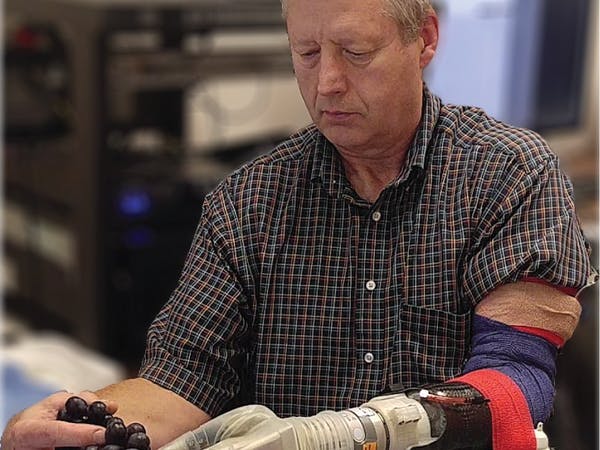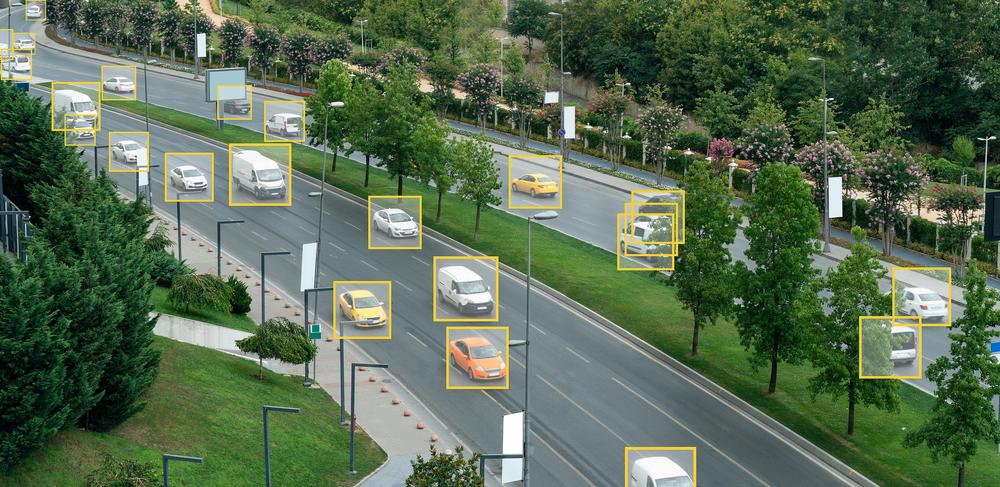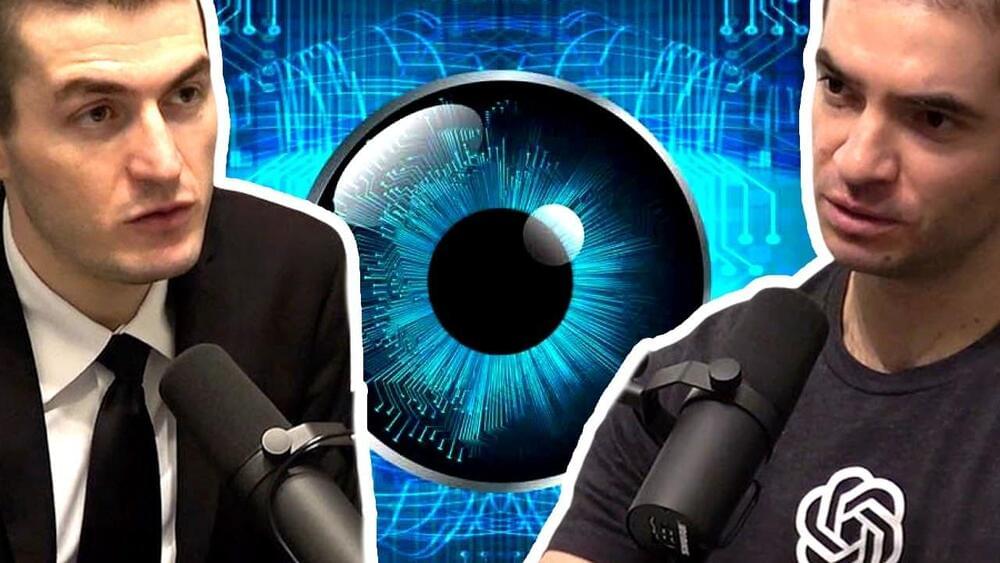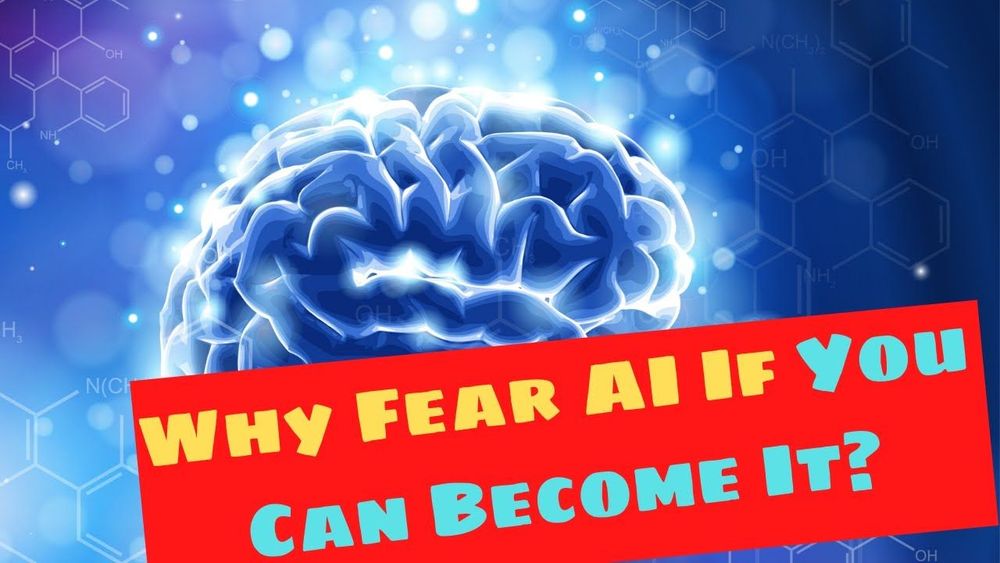What can you say Eric Klien.
The Vatican announced its plan for an ethical approach to AI development, arguing for things like transparency, inclusion, impartiality, and privacy.


Reason has done a great video and article on AI facial recognition, surveillance, etc, and combined it with fashion ideas. It’s created by Zach Weissmueller and Justin Monticello. My interview (as well as others) show up throughout the 11 min video. This is really important watching for the coming future:
Privacy activists say we should be alarmed by the rise of automated facial recognition surveillance. Transhumanist Zoltan Istvan says it’s time to embrace the end of privacy as we know it.

Researchers from the University of Utah are developing a system that allows amputees to control a bionic arm using just their thoughts. What’s more, the hand portion of the limb enables them to ‘feel’ objects that are being touched or grasped. Known as the Luke Arm (a tribute to Luke Skywalker’s prosthetic limb), the robotic arm mimics the way a human hand feels different objects by sending signals to the brain. An amputee wearing the arm can sense how hard or soft an object is, letting them understand how best to handle said objects.


Lockheed Martin’s Advanced Development Programs, known as Skunk Works, has demonstrated an artificial intelligence-powered intelligence, surveillance and reconnaissance (ISR) pod autonomously searching out and confirming a target.
The demonstration was conducted at Edwards Air Force Base in California using an ISR pod mounted on a Lockheed Martin F-16 fighter, says the company on 8 May. The demonstration was conducted in Air Force Test Pilot School.

The U.S. Navy is teaming up with DARPA to develop autonomous, robotic ships that are completely human free. The NOMARS (No Mariners Required Ship) concept, if successful, would be a huge leap over current unmanned surface vessel development efforts. The result could be a warship able to do the tedious, dangerous, and dirty jobs all by itself, keeping human-crewed ships safe from harm—and boredom.
The Navy, struggling to grow the fleet on a flat defense budget, is making a big push into unmanned surface vessels, or USVs. The Navy plans to build ten Large Unmanned Surface Vehicle ships, 200 to 300 foot long vessels displacing 2,000 tons, in five years. LUSV would act as a scout, sailing ahead of the fleet to detect threats early, or floating magazine, carrying a large load of missiles. LUSV would ideally be autonomous, or optionally manned with a small crew.

Of the seven patterns of AI that represent the ways in which AI is being implemented, one of the most common is the recognition pattern. The main idea of the recognition pattern of AI is that we’re using machine learning and cognitive technology to help identify and categorize unstructured data into specific classifications. This unstructured data could be images, video, text, or even quantitative data. The power of this pattern is that we’re enabling machines to do the thing that our brains seem to do so easily: identify what we’re perceiving in the real world around us.
The recognition pattern is notable in that it was primarily the attempts to solve image recognition challenges that brought about heightened interest in deep learning approaches to AI, and helped to kick off this latest wave of AI investment and interest. The recognition pattern however is broader than just image recognition In fact, we can use machine learning to recognize and understand images, sound, handwriting, items, face, and gestures. The objective of this pattern is to have machines recognize and understand unstructured data. This pattern of AI is such a huge component of AI solutions because of its wide variety of applications.
The difference between structured and unstructured data is that structured data is already labelled and easy to interpret. However unstructured data is where most entities struggle. Up to 90% of an organization’s data is unstructured data. It becomes necessary for businesses to be able to understand and interpret this data and that’s where AI steps in. Whereas we can use existing query technology and informatics systems to gather analytic value from structured data, it is almost impossible to use those approaches with unstructured data. This is what makes machine learning such a potent tool when applied to these classes of problems.


Full episode with Ilya Sutskever (May 2020): https://www.youtube.com/watch?v=13CZPWmke6A
Clips channel (Lex Clips): https://www.youtube.com/lexclips
Main channel (Lex Fridman): https://www.youtube.com/lexfridman
(more links below)
Podcast full episodes playlist:
Podcasts clips playlist:
Podcast website:
Podcast on Apple Podcasts (iTunes):
https://apple.co/2lwqZIr
Podcast on Spotify:
https://spoti.fi/2nEwCF8

Hey all! I’ve recently made a video on how humans can one day become AI and how this can be good for individuals and humanity on its own! If you are interested, please give it a watch!
AI is oftentimes the ultimate bane of science-fiction. Artificial intelligence oftentimes becomes smarter than humanity and turns on us in sci-fi movies and films. However, what if people could become AI one day and use this to their advantage? And if so, would people choose to become AI? Here’s why I believe this may be possible and why people may actually voluntarily choose to become AI themselves- thus blurring the lines between computer science and biology.
Please follow our instagram at: https://www.instagram.com/the_futurist_tom/
For business inquires, please contact [email protected]